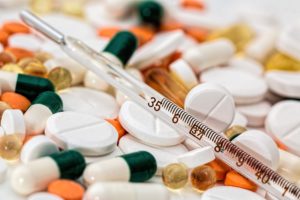Do you suspect that you or a loved one is an alcoholic or addict? Would you like to know more about chemical dependency and the treatment programs that are available? If so, please continue reading.
Chemical Dependency: What is It?
 First and foremost, it’s important to note that chemical dependency is recognized as a disease that results in an individual becoming chemically dependent upon a substance such as drugs or alcohol. The disease of chemical dependency progresses, causing negative consequences.
First and foremost, it’s important to note that chemical dependency is recognized as a disease that results in an individual becoming chemically dependent upon a substance such as drugs or alcohol. The disease of chemical dependency progresses, causing negative consequences.
That doesn’t stop the user, however. The consequences may range from impacts like relationship losses, legal implications and problems within the workplace to physical issues like Hepatitis C, liver damage, and even death. Santa Monica Christian Counseling offers support for individuals struggling with addiction to help prevent these harmful outcomes and promote recovery.
Addicts have no specific stereotype. They aren’t all homeless or junkies on the street. Chemical dependent people come in all shapes and in all sizes including women, men, black, white, poor and wealthy individuals. Usually, the addicted person really wants to quit using substances or at least to halt the negative consequences that come along with drugs and alcohol. But, they are unable to quit.
There are a number of ways the addict may try to take control of for their use. They might decide to only use when they are not at work or school or not to use while the children are home. They may even switch the substance they are using, in hopes of getting a grip on their disease.
Although the addict generally makes first one attempt to quit and then another, the outcome is usually fruitless which can send them even deeper into their addiction. Quitting the use of substances is a lot more difficult and complicated that one might think. It is not merely a matter of willpower.
The roots of chemical addiction run far deeper than self-discipline. The addict needs help from those on the outside. Even when the addict does succeed at quitting for a time, physical and mental withdrawal symptoms usually set in, complicating the situation even further.
Withdrawal may entail multiple things which depend on factors such as the substance that was being abused, the amount of the substance that was being taken and the strength of it. The length of time the drug was being used is also taken into consideration.
Symptoms of withdrawal may include fever, blackouts, anxiety, vomiting, seizures, inability to sleep, sleeping too much, depression and/or suicidal thoughts, loss of appetite, delirium, restlessness, and coma. It is advisable for anyone who is going through a withdrawal to be medically supervised. At this time, a substance abuse program is likely to be recommended.
Within the past two decades, help for chemical dependency was evolved and is offered in many varieties to best suit the addict. Meeting with a professional is the best way to determine the next step that should be taken.
Chemical Dependency Treatment Programs
There are a number of types of chemical dependency programs. Here are some of the kinds of addiction treatments that are available today for the addict:
Detox
 It is very common for individuals who are entering into recovery for substance abuse to need medical oversight. There are medical complications that can arise and the process can be uncomfortable. Detox facilities offer the addict an environment where they can be monitored, can (in some facilities) receive medicine for comfort (physically and emotionally), and emotional support.
It is very common for individuals who are entering into recovery for substance abuse to need medical oversight. There are medical complications that can arise and the process can be uncomfortable. Detox facilities offer the addict an environment where they can be monitored, can (in some facilities) receive medicine for comfort (physically and emotionally), and emotional support.
Detox centers are designed to be a place of safety where the chemically dependent person can rid their bodies of drugs or even alcohol. The normal length of stay is 3-7 days but that can vary based upon what drug you were using, how often you were using it and how much of it you were using.
You will stay in the facility around the clock because the withdrawal will be a 24-7 process. After the detox process, an in-patient treatment program is usually recommended to continue recovery.
Out-Patient and In-Patient Treatment
Treatment centers for addiction are located all over the globe so there are many to pick from. The initial step is to determine whether you actually need to enter a detox center prior to the treatment program. Some individuals are able to go directly into treatment since their bodies are not dependent on a physical level. After that is determined, you will need to decide whether an in-patient or out-patient program is most suitable.
In-patient, or in-house, residential treatment usually ranges in length from 28 days up to 6 months or even a year in extreme cases. When going through this type of program, the addicted person will remain at the designated facility day and night. There, the addict’s needs are able to be are met.
It is common for addicts to also struggle with mental health issues. In such cases, concurrent treatment is offered in many in-house, residential treatment programs. The mental health resources offered in such programs can make the difference in an addict being able to succeed in their recovery because individuals often become addicted while trying to medicate mental health problems on their own. Anxiety, depression, and scores of other conditions constitute mental health issues.
Out-patient types of treatment programs may also be used. Such programs do not involve being admitted overnight stay so the client is able to leave the facility after the treatment. Sometimes, clients go right into out-patient but that depends on the degree of their addiction’s progression.
 After an individual completes in-patient treatment, they usually enter into out-patient care services. Treatment that is considered out-patient can entail different types of formats based upon your personal needs. The main focal areas are support system development, education, and counseling.
After an individual completes in-patient treatment, they usually enter into out-patient care services. Treatment that is considered out-patient can entail different types of formats based upon your personal needs. The main focal areas are support system development, education, and counseling.
The different kinds of out-patient services offered include programs held during the daytime, (IOP) intensive out-patient, and continuing aftercare. Day programs offer an out-patient setting and are the highest care level that is offered and can last several hours per session for 5-7 days a week.
IOP is usually a treatment that takes place a couple of times a week for a couple of hours each time. The client, or addict in treatment, is required to complete a treatment plan. As they work through the process, the hours of designated treatment begin to decrease. IOP is often the best course for individuals with personal responsibilities, such as those who have young children to care for or jobs they cannot take leave from.
Continuing care is typically suggested in most programs that are out-patient. The continued aftercare generally involves engagement in a group that is recovery oriented like Narcotics Anonymous, Alcoholics Anonymous, Celebrate Recovery, and other programs that are 12-step focused.
Importance of Continuing Care in Recovery
Addiction and alcoholism are diseases that isolate you and want to keep you alone. It is important to no longer live alone with your disease. When attending 12-step meetings, you are surrounded by people who have been through similar struggles, and you can make new clean and sober friends.
When attending a meeting that is rooted in 12-step philosophy, each person will be in a different phase of their recovery process. It is encouraging for newcomers to witness the individual with a number of years in sobriety. It is also encouraging for those with recovery time under their belts to see newcomers come through the door, seeking help for their addiction.
The program helps both the newcomer and the one who has actively been in recovery for a while. It also helps those who are in recovery prevent relapse.
The 12-steps model of recovery offers a new way to live life without the use of substances. It is centered on a higher power. In our Christian walk, we believe our higher power is Christ Jesus. What follows is a Christian oriented 12-step setup that includes concepts that are Biblically based but that align with the concepts of the traditional 12-step set up as well.
The Biblical comparisons to the twelve steps are:
 We openly admit that we are completely powerless to overcome our compulsive behavior and addictions and that our lives have spiraled out of control. Romans 7:18 tells us that nothing that is good lives in us in our sinful nature even when we want to do right, we are unable to do so on our own.
We openly admit that we are completely powerless to overcome our compulsive behavior and addictions and that our lives have spiraled out of control. Romans 7:18 tells us that nothing that is good lives in us in our sinful nature even when we want to do right, we are unable to do so on our own.- We believe that a power that is greater than us could restore our sanity. Philippians 2:13 says that God will do His good work within us for his perfect purpose.
- We turn our lives and will over to God’s care through a conscious decision. Romans 12:1 says that we are to take care of our bodies and are to make them a living sacrifice for the glory of God.
- We take a fearless and searching moral inventory of our lives. Lamentations 3:40 says we shout examine our ways so we can return to God.
- We admit our wrongs to ourselves, God and others. James 5:16a urges us to confess our sins to one another and to pray for one another so we can experience healing.
- We are completely ready for God to remove our character defects. James 4:10 says we are to humble ourselves before the Lord and He will lift us up.
- We ask Him, humbly, to take our sins away. 1 John 1:9 says that if we repent of our sins, God is ready and able to forgive our sins.
- We list all people we have harmed and we are willing to amend the wrongs. Luke 6:31 says we are to do to others as we would have them do to us.
- We directly make amends to those we have wronged unless it would hurt them or hurt others. Matthew 5:23-24 tells us that we are to make things with our brother right if he has something against us and that we should attempt to reconcile with him if possible.
- We continue to take a personal inventory so that we admit our wrongs right away. 1 Corinthians 10:12 says we are to stand firm so we don’t end up falling.
- We pray and meditate to help improve our relationship with God. Colossians 3:16a tells us Christ’s Word dwells richly in us.
- After having a spiritual awakening due to taking the steps, we share the message with others and kept practicing them, ourselves. Galatians 6:1 says we should gently confront and offer help to those who are actively involved in sin and that we should keep our own hearts guarded so we don’t end up giving into temptation ourselves.
Christians in Recovery
Look to the LORD and his strength; seek his face always. – 1 Chronicles 16:11
As Christians, looking to the Lord can bring us strength during our time of need. Addiction is filled with struggles. It can be a confusing and chaotic time in our life. But God can free us from the chains that bind us. We, as Christians, are blessed with a God who will give us rest and lead us in our recovery.
Rest assured that the pain you go through in your addiction will not be wasted. God will make sure it is used for His glory if you allow Him to. He will restore you and you’ll be able to help others in the future who are having a difficult time, struggling with chemical dependency. God has given His word and promises to give you the strength to get through it all.
Reach Out for Help Today
No matter where it is that you land on your journey to recovery, it is helpful to seek individual counseling for chemical dependency. Usually, discovering the root issues of the substance abuse and working through those issues is a necessary part of the process.
Seeking help through therapy is a beneficial step to assist you in making your recovery from addiction stronger so relapse is less likely to occur and you can move forward in your new life of sobriety. If you or your loved one are ready to confront your addiction, know that I am available to help.
We have witnessed many clients experience success in treatment when they are willing to be honest and open and are ready to confront the issues behind their addiction head-on. It is important for you to know that, by the grace of God, there is hope, and your future can be a bright one. Reach out to a chemical dependency counselor at Santa Monica Christian Counseling today.
“Thermometer”, Courtesy of stevepb, Pixabay.com; CC0 License; “Trying,” courtesy of Tyler Nix, unsplash.com, CC0 License; “Bright Dawn”, Courtesy of Helena Lopes, Pexels.com, CC0 License; “Prayer”, Courtesy of Ayo Ogunseinde, Unsplash.com, CC0 License


